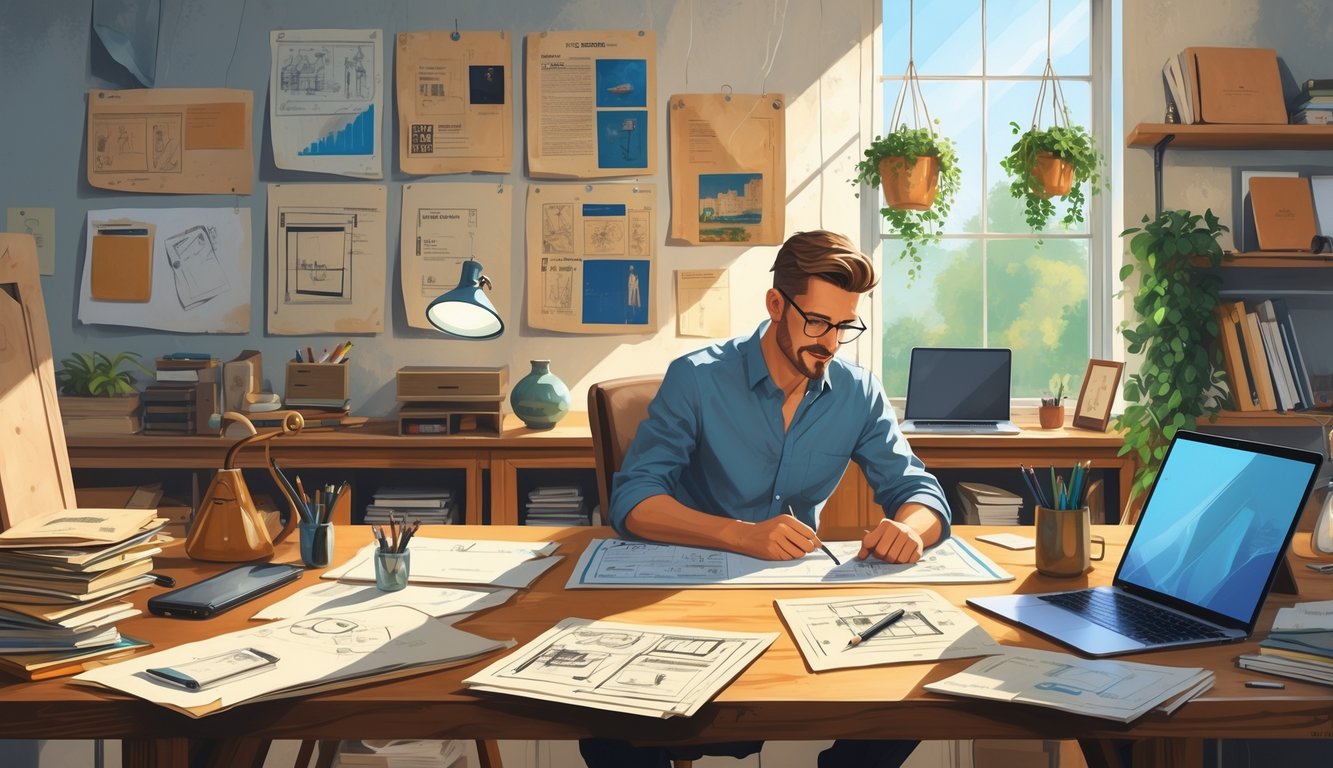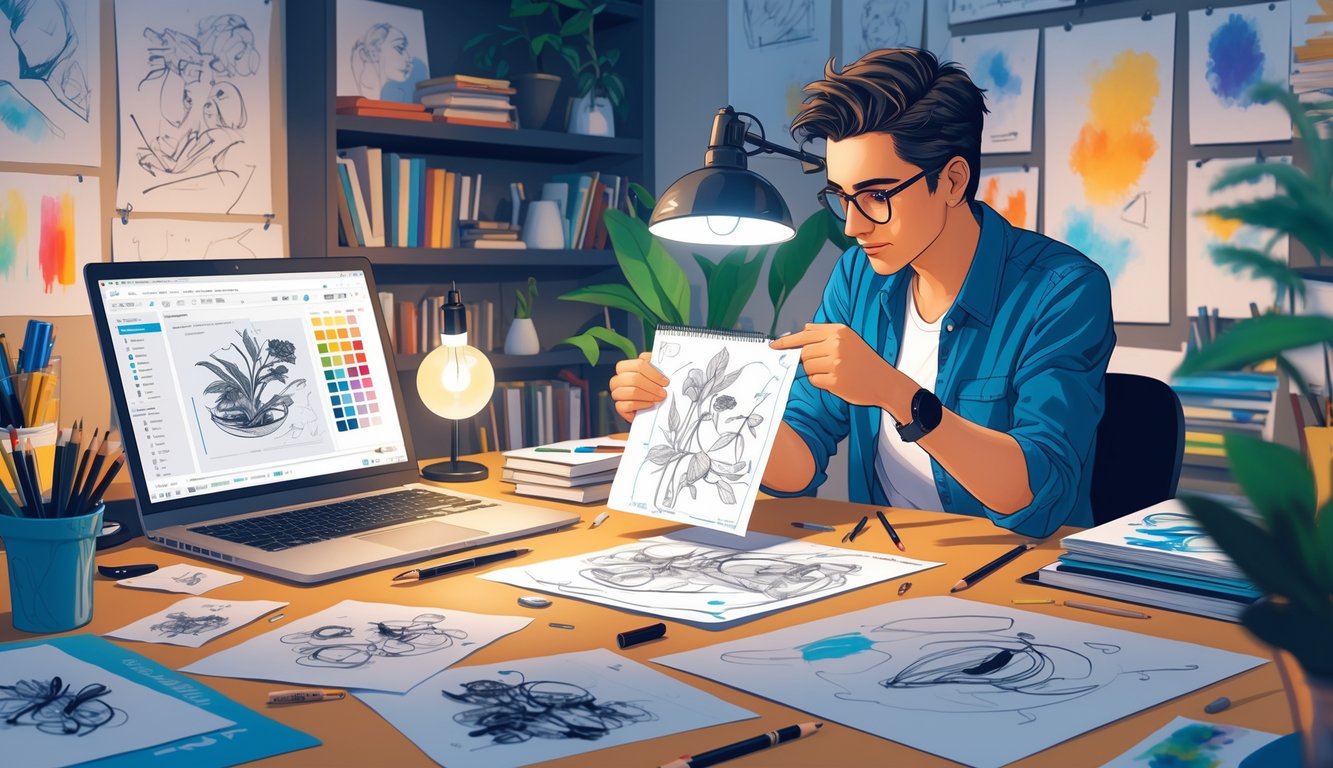
Sparking New Creative Ideas
Right, inspiration. Once, while updating my closet spreadsheet (don’t judge), a line from a six-month-old email sparked a campaign angle. Apparently, untold stories and ignored needs hide in boring routines. Wish there was a “Guaranteed Creative Breakthroughs” checklist. There isn’t.
Burnout? Walks and herbal teas didn’t do squat. Shifting context—reading random product launch press releases, tech docs, even ancient blog posts—shakes loose new ideas way faster than any brainstorm. Sometimes I dig into a 2006 forum post and, under all the cringe, there’s the missing piece. Recycling? Maybe. But sometimes that’s exactly how innovation happens, even if it looks like laziness from the outside.
Learning from Previous Craftsmanship
Ask ten “pros” about learning from old work and you’ll get at least fifteen answers, half of them nonsense. Me? I raid my digital archives because apparently reviewing old stuff is trendy again. Some productivity blog calls it “old is gold.” They haven’t seen my college typography, clearly.
Files from 2019—pixelated, over-designed, and full of snarky margin notes—prove that craftsmanship actually evolves when I roast my own work. Not humility. Survival. Every ugly logo, dumb slide transition, and outdated portfolio piece has a lesson. Usually it’s “Why so many gradients?” or “That icon was fine before I ruined it.” Tiredness makes my old stuff seem better than it was, but nothing beats seeing the actual mess.
Evaluating Old Projects with a Critical Eye

Staring at this folder from 2018—why is there always a weird font in the header?—I remember the caffeine, the mistakes I hid by saving backups. People think revisiting old work is about nostalgia. Nope. It’s mostly filtering out chaos and resisting the urge to delete everything out of embarrassment.
Assessing Strengths and Weaknesses
Digging through old projects? I find more flaws than strengths. That’s the point, apparently. Once, I found a campaign proposal where the headline was genius (my words, not anyone else’s), but the call to action was literally a blank space. Memory is a liar. External feedback is gold; clients and colleagues always spot what I miss. Structured creative evaluation methods, like post-event responses or suggestion boxes, give me way more useful feedback than my own overthinking.
A great color palette, a unique layout, one solid paragraph—sometimes that’s all that’s worth saving. The rest? Mostly panic-fueled experiments and excuses. I even cross-reference old drafts with published work because I don’t trust my memory, especially after midnight.
Filtering Projects for Revitalization
No way am I reviving everything—life is short, storage isn’t free. Filtering for what’s worth saving means being brutally honest. If I can’t name a real use case—client, content gap, new audience—I’m deluding myself. Sentimentality loses every time.
Quick rules: I jot down the hardest questions (“Does anyone care about this?”). Pros use intentional evaluation strategies, like making a list of essential questions before even starting. That’s saved me from wasting hours on hopeless projects.
Still, I get distracted by “cool” ideas that are totally irrelevant now—like a content series about a discontinued product, or decks full of inside jokes. There’s always some bias hiding in my old stuff, some of it accidental, a lot of it just wishful thinking from creative partners who never replied to emails.
Integrating Current Trends and Innovation

Alright, let’s just be honest: dragging out “classic” creative projects and hoping they’ll magically work again? No. Trends move so fast I sometimes wonder if I’m the only one who’s still catching up. Five-year-old tactics feel like VHS tapes in a TikTok world. Every week, something new—AI tools, clients wanting “nimble” this and “authentic” that, platforms I’ve never heard of. It’s exhausting.
Bridging Old Ideas with Innovation
So, picture this: Thursday morning, drowning in emails, I catch myself reusing a 2016 campaign skeleton. Not even ashamed, just tired. But if I say “viral” one more time, I’ll gag. Stanford wrote some piece about remixing legacy ideas with current trends—like, TikTok challenges glued onto dusty branding—and apparently that combo wins 60% of the time. Who’s checking these stats? Still, can’t argue with a number that specific.
Here’s the bit nobody admits on those “future of creativity” Zoom calls: the only way this Frankenstein approach works is if I do the boring part first—dig into what actually made the old project tick. Metrics, user behaviors, all that spreadsheet stuff I pretend to hate. Then I bolt on something interactive or algorithm-bait-y and see if it flies. Sometimes “innovation” is just mashing two half-dead ideas together and watching which one the comment trolls eat alive. Once, I referenced an old meme out of desperation and it blew up in Saskatchewan. No rhyme or reason. Don’t overthink—just track, tweak, and move. Nostalgia’s fine, but laziness? Not so much.
Infusing Modern Techniques
And I swear, if one more person says “modernize” and means “add AI and sparkles,” I’m out. I’m messing with real-time data plug-ins, automating half my Figma workflow, tossing in low-code prototypes that actually save hours—sometimes. Forbes keeps yelling about “creative agility” (whatever that means), but the only thing that sticks is: cut the red tape, make the process less painful, and get weird with your tools.
My Google Sheets have tabs for every tool I’ve tried—Zapier, generative art scripts, API hacks, you name it. If your workflow gets called “predictable,” that’s a red flag, not a compliment. Once, I sent a transparent PNG to print by accident and the client called it “avant-garde minimalism.” Mistake or innovation? Depends on how fast you fake confidence. The line’s so thin, I can’t always tell which side I’m on.



